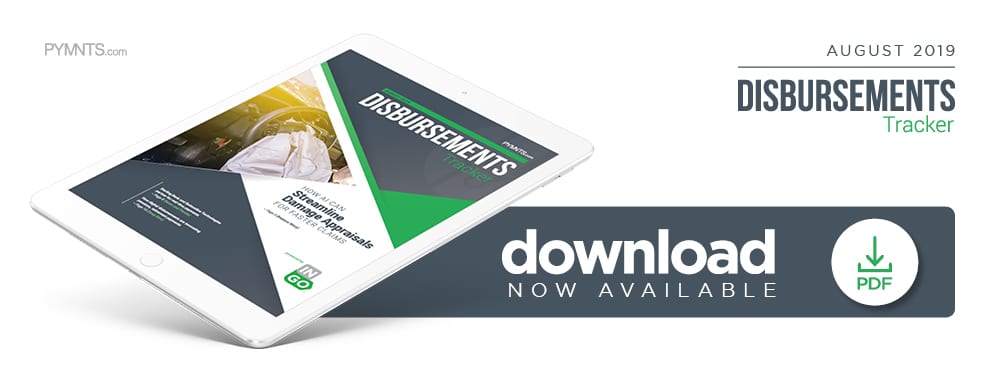Tractable Taps AI For Faster Auto Insurance Claims
For roughly 6 million Americans who get into car accidents each year, another harrowing experience awaits when it comes to the insurance claim. After an appraisal, consumers typically wait days or weeks for a check to arrive, delaying the repair of their car. In the new Disbursements Tracker, Julie Kheyfets, head of North America for damage appraisal company Tractable, discusses how AI solutions can streamline settlements and rev up car repairs.
Many a consumer embarking on the cumbersome path of filing an insurance claim has already had the harrowing experience of being in a car accident. The last thing he or she wants to deal with is a process that typically requires waiting days or weeks for appointments with appraisers before being able to file. The wait continues until consumers finally receive funds from their providers to get their vehicles repaired.
This is an experience many U.S. consumers are all too familiar with. There are some 220 million drivers in the country, and tens of thousands are involved in road accidents each year, costing the U.S. an average of $230.6 billion annually — all of which can add up to a lot of disgruntled insurance customers.
Insurance carriers still rely on human beings for appraisals, and it can take an excruciatingly long time to evaluate the results of an accident and provide customers with estimates. Today’s tech-savvy customers can find manual evaluation processes frustrating, as well.
Insurers are under pressure to innovate the appraisal and claims process to stay competitive and deliver the speed and efficiency consumers expect. Many firms are moving away from live appraisers and are instead utilizing advanced learning technologies such as artificial intelligence (AI) to analyze data and images within a fraction of the time it would take human agents to do so. Julie Kheyfets, head of North America for AI-driven damage appraisal company Tractable, stated that the company’s tool uses image classification to determine damage and cost, allowing consumers to either set up appointments or cash out claims from their mobile devices.
“Where our AI is really focused is on that specific activity of assessing damage,” Kheyfets said. “If you think about how a human does this, they look at it and they figure out what kind of car they’re seeing, what kind of car parts are damaged … and these are all things that our AI is doing as well.”
In a recent interview with PYMNTS, Kheyfets explained how insurers can better rely on AI and mobile technologies for faster appraisals and disbursements.
Using AI, Mobile for Faster Appraisal, Instant Payments
Kheyfets believes that moving the appraisal aspect of the claims process online opens up a world of opportunity for insurers and end customers. AI can shorten the process, allowing consumers to finalize their claims and receive payments using the digital and mobile devices on which they already rely. The process becomes nearly instantaneous when using images.
“You can capture photos of the damage right on your phone … and you can get an instant estimate right there that’s done by our AI,” she said. “You’re eliminating multiple phone calls, you’re eliminating that first appointment where someone is actually appraising the damage — you take a few photos and you know immediately what the estimate is to repair that car.”
Customers can also use the service to ask their insurers to pay out funds for that claim. Kheyfets did note that how consumers are paid, whether through automated clearing house (ACH), direct deposit, check or instant payment, is completely up to the insurance carrier.
Many carriers are automating those payments, however, and those experimenting with AI or other ways to remove the numerous steps between appraisal and finalization are better able to meet tech-savvy customers’ needs.
“The carriers that are managing to move to AI-enabled processes, to mobile processes … are getting the benefit of matching those expectations,” Kheyfets explained. “But they need to be the ones to push, because customers aren’t the ones coming to them saying, ‘Hey, maybe, actually, you can make this mobile for me, instead.’”
She said the demand isn’t limited to mobile-loving millennials, either. Older users who have had car insurance policies for decades are learning to appreciate faster, mobile-based tools.
The future of Insurance Payouts
Insurers are still in the early stages of experimenting with AI and other automated technologies in their claims processes. Kheyfets likened the process to tools such as check capture in mobile banking, where reticence soon gave way to early adopters, before it finally became one of the more popular ways for consumers to deposit funds.
“I see the same thing happening soon with claims,” she said. “It’s building the momentum now, and at a certain point there will be critical mass, where it will be crazy to actually go to a shop to have your car appraised by a human, because everyone will be doing it on their phones.”
Kheyfets sees even more opportunity in the future of AI in this space. She believes that the potential and applicability of AI is enormous, meaning that insurers and end customers could eventually see new use cases that would make the claims settlement and funds disbursements processes faster.
“You could imagine people getting better premiums from their insurers … if they can prove their cars [are] in pristine condition, because today, at least in the U.S., insurers get few data points on the car when they’re insuring it. They’re mainly insuring the driver,” Kheyfets said. “But if you have an AI that says, ‘This car is 10 years old, but actually it looks like new,’ maybe you can get a discount on your policy.”
Consumers are unlikely to change how they feel about long wait times and weeks-long claims processes, but when they have accidents, they are most likely to find favor with solutions that can deliver fast fixes and get them back on the road.

